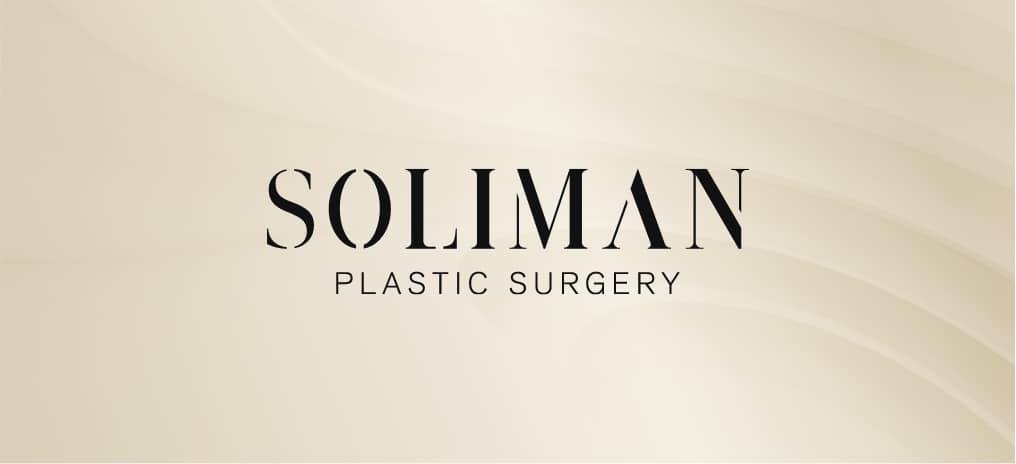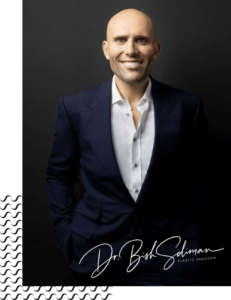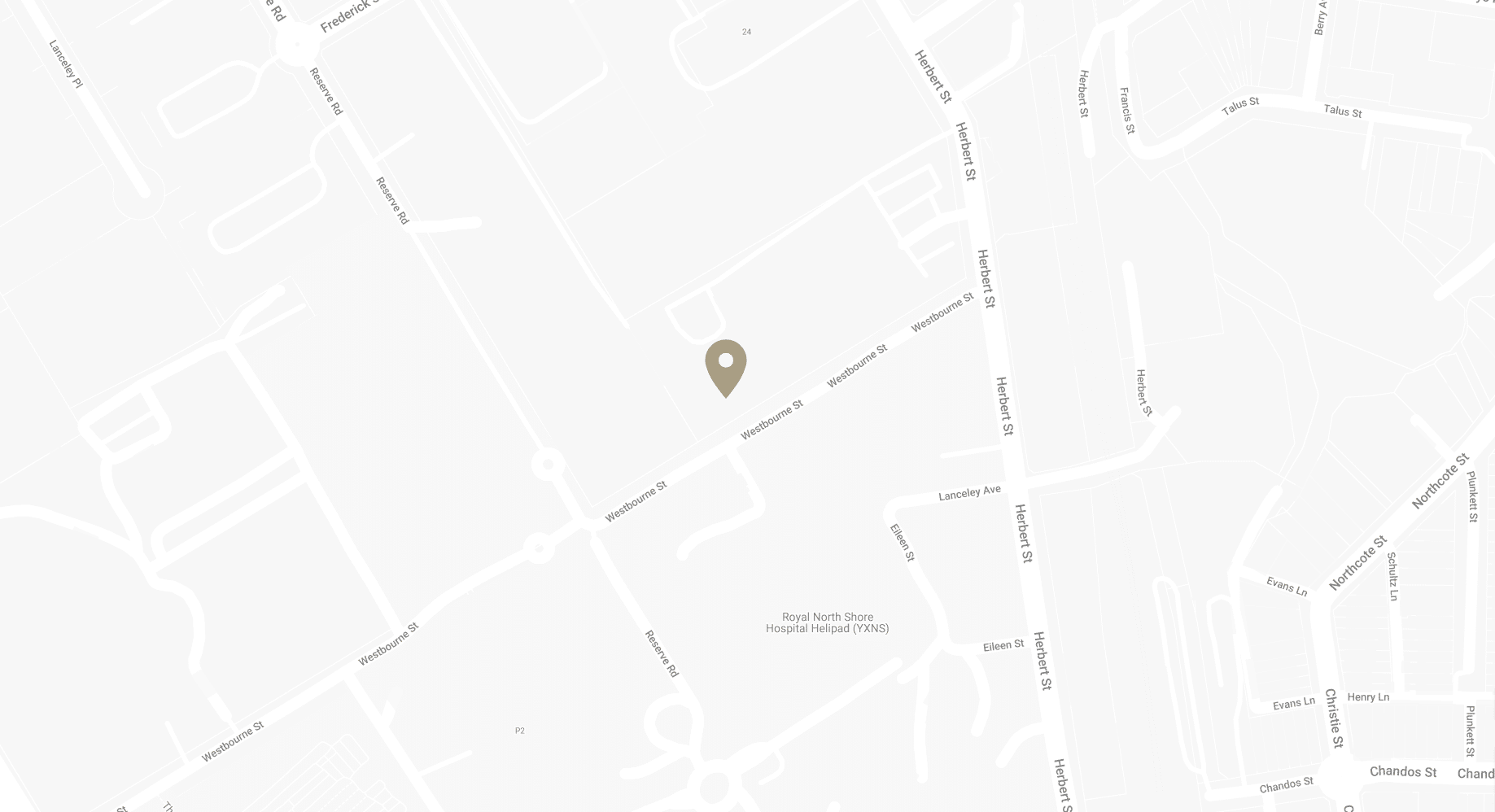FAQs about DIEP Breast Reconstruction Surgery Answered by Sydney Specialist Plastic Surgeon Dr Bish Soliman
Breast reconstruction is an option for women who have undergone mastectomy due to breast cancer or are at high risk for the disease. Among the various techniques available, DIEP (Deep Inferior Epigastric Perforator) flap breast reconstruction stands out as a preferred option for many. This advanced procedure uses a woman’s own abdominal tissue to recreate a natural-looking breast. Dr Bish Soliman, a renowned Specialist Plastic and Reconstructive Surgeon based in Sydney, performs this complex microsurgical technique. His expertise and personalised approach ensure that each patient’s reconstruction journey is tailored to meet her unique needs and aesthetic goals.
Download Dr Bish Soliman Cosmetic Breast Surgery Guide

FAQs about What is DIEP Flap Breast Reconstruction
What exactly is DIEP flap breast reconstruction?
- DIEP flap breast reconstruction is a cutting-edge surgical procedure that involves using a woman’s own abdominal skin and fat to reconstruct a natural-looking breast after mastectomy. Unlike other methods, the DIEP (Deep Inferior Epigastric Perforator) flap technique preserves all the muscle, taking only skin and fat from the belly area, which is then transplanted to the chest. This microsurgical procedure involves connecting the blood vessels of the transplanted tissue to those in the chest, ensuring the newly formed breast has a sufficient blood supply.
How does DIEP flap reconstruction differ from other types of breast reconstruction?
- The primary distinction of DIEP flap reconstruction from other methods, such as the TRAM flap or implant-based reconstruction, lies in its muscle-sparing approach. While the TRAM flap involves taking a portion of the abdominal muscle, which can weaken the abdominal wall, the DIEP flap preserves all the abdominal muscles, resulting in less pain, a quicker recovery, and maintaining the abdominal strength post-surgery. Compared to implant reconstruction, DIEP flap uses the patient’s own tissue, offering a more natural feel and appearance, without the risks associated with implants, such as rupture or capsular contracture.
What are the benefits of choosing DIEP flap reconstruction?
- The benefits of DIEP flap breast reconstruction are many. Patients not only benefit from a reconstruction that looks and feels natural but also enjoy an improved abdominal contour, similar to the results of a tummy tuck – abdominoplasty, as excess skin and fat are removed from the lower abdomen. Additionally, because the abdominal muscle is preserved, patients typically experience a faster recovery and maintain their abdominal strength, which is crucial for overall mobility and health. The use of the patient’s own tissue also reduces the long-term complications associated with implants, providing a more durable and lifelong solution.
Is DIEP flap reconstruction right for everyone?
- While DIEP flap reconstruction offers numerous advantages, it’s not the optimal choice for every patient. Factors such as the patient’s health status, body type, previous surgeries, and personal preferences play a crucial role in determining the most suitable reconstruction method. A thorough consultation with a qualified surgeon like Dr Soliman is essential to assess suitability for the DIEP flap procedure and discuss the expected outcomes and any potential challenges.
FAQs about Good Candidates for DIEP Flap Reconstruction
Who is considered a good candidate for DIEP flap breast reconstruction?
- Good candidates for DIEP flap breast reconstruction are generally women who have sufficient abdominal tissue to create a new breast and are in good overall health to undergo a major surgery. Good candidates should not have significant medical conditions that impair healing or increase the risk of surgery. Non-smokers or those willing to quit smoking well in advance of the surgery are also preferred, as smoking can significantly affect the healing process and success of the microvascular connections essential for the transplanted tissue’s survival.
Can women with a thin build undergo DIEP flap reconstruction?
- While having enough abdominal tissue is a key factor for DIEP flap reconstruction, women with a thinner build may still be candidates for the procedure. Dr Soliman can employ advanced techniques to maximise the use of available tissue or consider alternative donor sites, though the abdomen is typically preferred for its ample and suitable tissue. Each case is unique, and a skilled microsurgeon can provide guidance on the best approach based on an individual’s body type and reconstruction goals.
What if I’ve had previous abdominal surgeries?
- Previous abdominal surgeries, such as a C-section or tummy tuck – abdominoplasty, do not necessarily preclude a patient from undergoing DIEP flap reconstruction. However, these factors can affect the complexity of the procedure. Scar tissue or altered blood vessels from prior surgeries may require additional planning and technique adjustments. A comprehensive evaluation by Dr Soliman will determine the impact of previous surgeries on the feasibility of DIEP flap reconstruction.
- You can have a DIEP with a C section but NOT with an Abdominoplasty!
- You may be able to have a DIEP after abdominal liposuction but need a CT scan to make sure
- Other abdominal surgery ok
How do I know if I’m a good candidate for DIEP flap reconstruction?
- The best way to determine if you’re a good candidate for DIEP flap breast reconstruction is through a consultation with a plastic and reconstructive surgeon performing microsurgical breast reconstruction. During the consultation, Dr Soliman will assess your medical history, conduct a physical examination, and discuss your reconstruction goals. Factors such as your overall health, body type, lifestyle, and personal preferences will be considered to ensure the DIEP flap procedure aligns with your expectations and offers the best possible outcome.
Are there any age restrictions for undergoing DIEP flap reconstruction?
- There are no strict age limits for DIEP flap breast reconstruction. The procedure has been successfully performed on patients ranging from their 20s to their 60s. The most important considerations are the patient’s overall health, ability to withstand a lengthy surgery, and potential for healing and recovery. Age alone is not a determining factor; rather, a comprehensive health assessment is used to evaluate suitability for this type of reconstruction.
FAQs about What to Expect Before, During, and After the Surgery
What should I do to prepare for DIEP flap surgery?
- Preparation for DIEP flap surgery involves several steps to ensure you are physically and mentally ready for the procedure and recovery. Firstly, it’s crucial to maintain a healthy lifestyle, including a balanced diet and quitting smoking, as smoking can significantly impact healing. You’ll also need to arrange for someone to drive you home post-surgery and assist you during the initial recovery phase. Pre-operative tests, such as blood work and imaging studies, may be required to assess your health status and plan the surgery. Dr Soliman and his team will provide detailed instructions tailored to your specific needs.
How is the DIEP flap surgery performed?
- DIEP flap surgery is a complex procedure that involves transferring skin and fat from the lower abdomen to the chest to reconstruct the breast without taking any muscle. The surgery is performed under general anaesthesia. Dr Soliman carefully disconnects skin and fat from the abdomen along with the accompanying blood vessels. These vessels are then connected to blood vessels in the chest using microsurgery techniques to ensure the transplanted tissue receives adequate blood supply. The abdominal incision is then closed, often improving the abdominal contour similar to a tummy tuck – abdominoplasty.
What can I expect during recovery from DIEP flap surgery?
- Recovery from DIEP flap surgery varies among patients but generally involves a hospital stay of 5 days for monitoring. Initial recovery is focused on pain management and monitoring for any signs of complications, such as issues with blood supply to the transplanted tissue. Swelling, bruising, and discomfort are common, and prescribed medications can help manage pain. Recovery at home includes rest, limited physical activity, and following specific care instructions for the surgical sites. Most patients can resume light activities within 2 to 4 weeks, but full recovery and return to all normal activities may take several months.
Are there any specific post-operative care instructions I should follow?
- Yes, post-operative care is crucial for a smooth recovery and optimal results. You’ll be given detailed instructions on how to care for your incisions, manage drains and recognise signs of complications. It’s important to wear the recommended compression garments to support healing. Avoiding strenuous activities, heavy lifting, and smoking is essential during the recovery period. Regular follow-up appointments with Dr Soliman will ensure your recovery is on track, and any concerns can be addressed promptly.
When will I see the final results of my DIEP flap reconstruction?
- While you will notice changes in your breast shape immediately after surgery, the final results of DIEP flap reconstruction can take several months to emerge. Swelling and bruising will gradually subside, and the breast shape will continue to improve as healing progresses. It can take up to a year for scars to mature and fade and for the reconstructed breast to settle into its final appearance. Patience and following your surgeon’s advice are key during this period.
FAQs about the Advantages of DIEP Flap over Other Reconstruction Methods
Why choose DIEP flap reconstruction over implant-based reconstruction?
- DIEP flap reconstruction offers several advantages over implant-based methods. Primarily, it uses the patient’s own tissue, which can result in a more natural look and feel compared to synthetic implants. This approach eliminates risks associated with implants, such as capsular contracture, implant rupture, and the need for future replacement surgeries. Additionally, DIEP flap surgery spares the abdominal muscles, leading to a lower risk of abdominal weakness or hernia formation, a common concern with some other flap procedures.
How does the aesthetic outcome of DIEP flap compare to other methods?
- The aesthetic outcomes of DIEP flap reconstruction are often superior to other methods because the reconstructed breast is made from the patient’s own body tissue, allowing for a more natural shape and texture. The technique also allows for more precise tailoring to the individual’s body shape and the unaffected breast, facilitating a more symmetrical look. Furthermore, patients benefit from an improved abdominal contour, similar to a tummy tuck – abdominoplasty, as a result of the tissue removal process.
Is the DIEP flap method less painful than other reconstruction options?
- Patients who undergo DIEP flap reconstruction often report less postoperative pain compared to those who have reconstructions that involve muscle transfer, such as the TRAM flap. This is because the DIEP flap preserves all the abdominal muscles, reducing the risk of long-term muscle pain, weakness, or hernias. It’s important to note that individual experiences with pain can vary, and comprehensive pain management strategies are provided to all patients regardless of the reconstruction method chosen.
What are the long-term benefits of choosing DIEP flap reconstruction?
- One of the most significant long-term benefits of DIEP flap reconstruction is the durability of the results. Because the reconstruction uses the patient’s own tissue, the breast is less likely to experience complications that can occur with implants over time. Additionally, the absence of foreign materials means that patients do not face the same risks of implant-related complications years down the line. The improvement in abdominal contour is also a permanent benefit, provided patients maintain a stable weight.
Can DIEP flap reconstruction improve recovery compared to other methods?
- Yes, the DIEP flap method can offer an improved recovery experience in several ways. Since the abdominal muscles are preserved, patients may experience a quicker return to normal activities and less functional impairment. The risk of complications such as abdominal hernias is also reduced, potentially leading to a smoother and more straightforward recovery process. It’s essential to follow all postoperative care instructions and attend follow-up appointments to ensure the best possible recovery.
FAQs about Potential Risks and Complications
What are the main risks associated with DIEP flap breast reconstruction?
- While DIEP flap reconstruction is a safe procedure for many patients, it carries some risks, as do all surgical procedures. Potential complications include issues with blood supply to the transplanted tissue, which can lead to tissue loss. Other risks include infection, bleeding, and delayed wound healing. There’s also a possibility of developing a hernia or bulge at the donor site, although this is less common than with procedures that involve muscle transfer.
How common are complications after DIEP flap surgery, and how are they managed?
- Complications are relatively rare, but their management is a critical aspect of postoperative care. Immediate complications related to blood supply are closely monitored in the hospital setting, and if detected, require a return to the operating room for revision. Long-term issues like wound healing problems or abdominal bulging are managed through follow-up care, which may include additional surgeries or non-surgical interventions. Dr Soliman and his team are committed to minimising risks and providing comprehensive care to address any complications should they arise.
FAQs about Combining DIEP Flap with Other Procedures
Can nipple reconstruction be part of the DIEP flap reconstruction process?
- Nipple reconstruction is best performed as a separate procedure after the initial reconstruction has healed to allow for the DIEP flap to settle into its final position. Techniques for nipple reconstruction vary, including the use of local tissue to create a nipple mound and tattooing to add colour and create the appearance of an areola. Dr Soliman will discuss the timing and options for nipple reconstruction during your consultation.
Is it possible to combine DIEP flap reconstruction with cosmetic procedures like a tummy tuck?
- DIEP flap reconstruction inherently includes the removal of lower abdominal skin and fat, similar to a tummy tuck – abdominoplasty. The procedure tightens and contours the abdominal area as part of the tissue transfer process. For patients interested in additional cosmetic enhancements, Dr Soliman can discuss options and the feasibility of combining procedures based on individual goals and medical suitability.
What if I already have breast implants but want to switch to DIEP flap reconstruction?
- Many women choose to switch from implant-based reconstruction to DIEP flap reconstruction for various reasons, including the desire for a more natural result or due to complications with implants. This transition is possible and can be discussed in detail during your consultation with Dr Soliman. The existing implants would be removed, and the DIEP flap procedure would be used to reconstruct the breast using your own tissue.
FAQs about Cost and Insurance Coverage
How much does DIEP flap breast reconstruction cost, and is it covered by insurance?
- The cost of DIEP flap breast reconstruction can vary widely based on the complexity of the surgery, and whether one or both breasts are being reconstructed. Most health insurance plans cover breast reconstruction after mastectomy due to cancer or as a preventative measure for high-risk individuals. Dr Soliman’s office can help you navigate insurance coverage and provide detailed information on expected costs.
Are follow-up care and potential revision surgeries covered by insurance?
- Follow-up care and revision surgeries are often covered by insurance, especially if they are deemed medically necessary. But coverage can vary, so it’s crucial to verify the specifics of your insurance plan. Dr Soliman’s office can assist in providing the necessary documentation to your insurance company to facilitate coverage for these aspects of your care.
Further Reading about DIEP Breast Reconstruction with Dr Bish Soliman
- Read Dr Soliman’s Blog about Private Health Insurance for Plastic Surgery in Australia
- Read Dr Soliman’s Blog about DIEP Flap Breast Reconstruction: What to Expect
- Read Dr Soliman’s Blog about Recovery after Breast Reconstruction Surgery (DIEP)
- Read Dr Soliman’s Blog about Medicare for DIEP Breast Reconstruction
- Read Dr Soliman’s Blog about Arm Exercises Post DIEP Flap Surgery
- Read Dr Soliman’s Blog about Lymphatic Drainage Massage Post Operatively after DIEP
- Read Dr Soliman’s Blog about Physical Therapy and Rehabilitation after DIEP Flap Surgery
- Read Dr Soliman’s Blog about Prosthetic Nipples and Tattooing after DIEP Breast Reconstruction
- Read Dr Soliman’s Blog about BMI over 35 and DIEP Flap Surgery
Medical References about DIEP Breast Reconstruction
- DIEP Flap Surgery: Breast Reconstruction – BreastCancer.org
- DIEP flap breast reconstruction – Cancer Australia
- Pioneering progress: An in-depth exploration of DIEP flap breast reconstruction techniques
- DIEP flap and autologous tissue transfer: The latest research and future developments
- Empowering access: How DIEP flap and autologous tissue transfer empower breast cancer survivors



